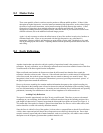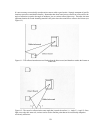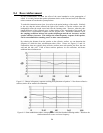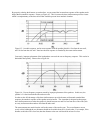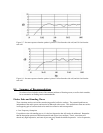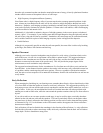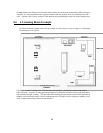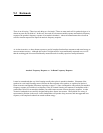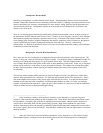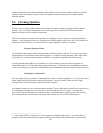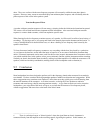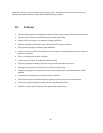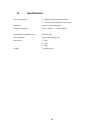32
Loudspeaker Measurements
Returning to loudspeakers, a similar situation has developed. Although nobody listens to music in an anechoic
chamber, loudspeaker measurements are commonly performed in them.(3) Although various proposals have been
made for performing low frequency measurements in a more realistic setting, there has been no agreement as to
what that setting should be. Loudspeakers continue to be measured in a test chamber that is equivalent to the
absence of any room at all.
There is a developing appreciation that this traditionally performed measurement is not an accurate predictor of
the performance actually attained in the listener's room. Certainly, in-room frequency response is more important
than anechoic response in determining a speaker's tonal accuracy. Placement of the speaker within a room will
cause changes in the frequency response compared to the anechoic conditions at lower frequencies, the speaker's
output is modified by the acoustic loading presented by the walls and floor. However, when making
measurements, it is difficult to separate the effects of a room's bass reinforcement from standing waves and other
resonances associated with that room.
Designing for Accurate Bass Reproduction
How, then, does one arrive at the goal of a loudspeaker that provides tonal accuracy in the listening room? The
answer, in large part, comes in the form of the digital computer. It is possible to create a mathematical model of a
listening room, and predict the response of a given speaker in that room. With the computer model, it is quite
easy to change the position of the speaker in the room, or other parameters of the model. In this way, a composite
picture can be created of a wide variety of rooms and speaker locations. This enables one to design the speaker
so that it interfaces properly with the listening environment and provides correct bass response in real-world
environments.
The accuracy of the computer model must also be tested in the physical world, using pink noise, warble tones,
and time-delay spectrometry for verification. The final, and most important check, is the listening test. Theory
and measurements become useless if they do not agree with what our ears tell us. Even the best measurement
methods provide little more than a simplified, one-dimensional translation of what is, in reality, an extremely
complex, multi-dimensional experience. Again, the goal is the recreation of a musical event, and the faithfulness
of that recreation can only be determined through listening.
_______________________________________
3 Since an anechoic chamber which performs accurately to low frequencies is extremely large and
expensive, other measurement methods are also commonly used. These include near-field measurements, when
the microphone is extremely close to the driver, and half-space measurements, when the speaker under test is
buried with its front baffle flush with the ground, facing upwards. Both of these methods are equivalent to
anechoic measurements below the frequency at which the speaker baffle appreciably changes the acoustic load to
the woofer, typically between 100 and 200 Hz. Note that these conditions are also non-representative of an actual
listening situation.
4 Since this discussion is concerned with the reproduction of low frequencies, we will not delve deeply
into the high-frequency variations between the anechoic response and the in-room response of a loudspeaker.



